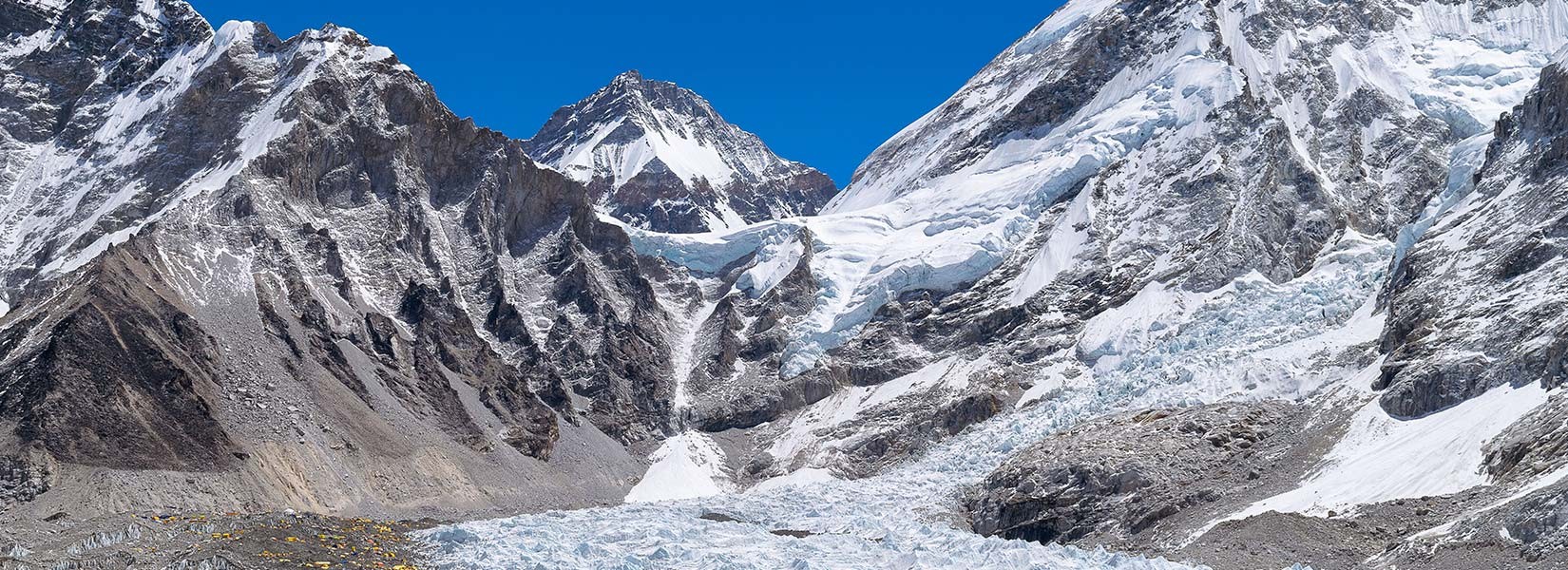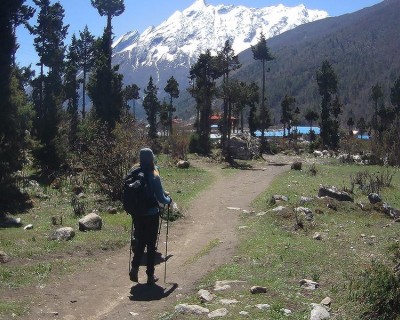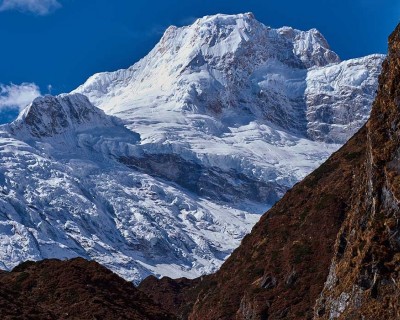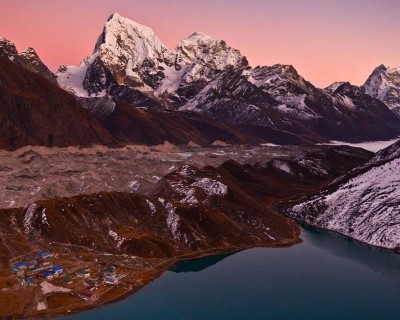Why Trek to Everest Base Camp Without Flying?
A Thrilling Journey on Classical Route
Before the Tenzing Hillary Aiport was built in 1964, this classical route from Salleri was the only viable option. Edmund Hillary and Tenzing Norgay Sherpa made their historic ascend in 1953 following this exciting route.
So, while doing the Everest Base Camp Trek Without Flying to Lukla, not only will you be exploring the iconic route but also walking on the same trails as the pioneers of Everest climbing who engraved their names in mountaineering history.
Walking across this classical route will add a sense of nostalgia. It will give you a more sense of authentic experience, like how the raw Himalayan exploration used to be like compared to today’s fast-paced treks.
Avoid Flight Risk and Traffic
Although the establishment of Tenzing Hillary Airport in Lukla has made the journey more convenient, it is still one of the most dangerous airports in the world. So, if you want to avoid the risk that comes along with the short runway and unpredictable weather, the drive route from Salleri is your ultimate companion.
Similarly, during the months of peak seasons like spring (March, April and May) and autumn (September, October and November), the flights need to operate from alternative routes. As the traffic congestion is higher during these periods, the flights are re-routed from Manthali Airport in Ramechhap.
You need to drive around 5 to 6 hours from Kathmandu after waking up at around 2 AM to catch the morning flight to Lukla. So, to avoid the inconveniences and risk factors, the Everest Base Camp Trek Without Flying to Lukla is a safe bet.
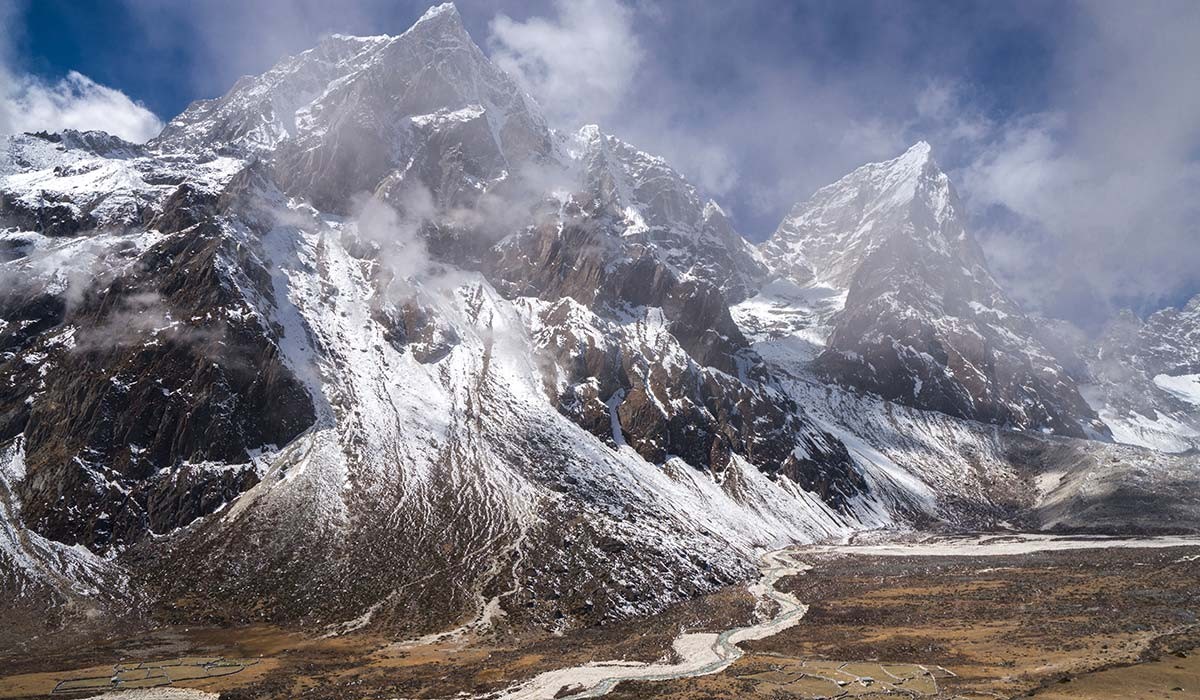
Less Crowded Experience
Everest Base Camp Trek is not only popular in Nepal but also all over the world. Due to its incredible popularity, thousands of explorers pour into the region every year to admire the grandeur of the mightiest mountain in the world at the heart of the Himalayas.
Due to this, the trekking routes are pretty much packed throughout the year. However, as only a few trekkers take the driving route, the Everest Base Camp Trek Without Flying to Lukla will offer you more opportunities to embrace the tranquil side of the Himalayas.
You will not have to worry about the crowd at the transit points; this journey starts from the lower Everest region and slowly takes you across the major highlights of the mainstream route.
Diverse Cultural Immersion
In a standard Everest Base Camp Trek, your journey will start after a flight from Kathmandu (1,400m/ 4,593ft) to Lukla (2,800m/ 9,186ft). As the journey starts from the high altitude point on the standard route, there is very little diversity and you will only get the chance to explore the major high-altitude Sherpa settlements.
However, Kathmandu to Everest Base Camp by Road, which starts at the lower part of the region, will provide you the opportunity to relish the cultural diversity along the route. You will have the chance to explore the beautiful Rai, Limbu, Brahmin, Chhetri, and Tamang settlements while moving along this classical Himalayan route.
Gradual Acclimatization
If you think about it, every high-altitude journey has the risk of Acute Mountain Sickness (AMS). There are high chance of triggering its symptoms if the trekkers don’t follow a proper acclimatization schedule.
As your journey on the standard route starts from a high altitude point, you will need to be extra careful regarding the symptoms of altitude sickness. However, the Kathmandu to Everest Base Camp by Road starts at Salleri (2,262/ 7,749ft) and will provide you ample time to slowly adapt to the rising altitudes.
Thus, your exhilarating trekking adventure on this classical route will significantly eliminate the risk of altitude sickness and you will be able to enjoy the experience with more ease.
The Road Route to Everest Base Camp
If you surf for the Everest Base Camp Trek Without Flying to Lukla on the internet, you may come across several itinerary plans for this classical experience. For instance, the treks may start after a drive from Kathmandu to Kharikhola (2,257m/ 7,404ft) or from the Jiri (1,905m/ 6,250ft) route.
Even though the driving points may be different in the packages you are surfing, the routes they follow are pretty much similar. If you take the driving route from Kharikhola, you will then trek to Paiyun (2,760m/ 9,055ft) and join the mainstream route at Phakding (2,610m/ 8,562ft).
As for the Jiri driving route, you will head toward Deurali (2,250m/ 7,381ft) and to Sete (2,575m/ 8,448ft). Then, the next part of the trail will take you to Nunthala (2,280m/ 7,480ft) and you will reach Paiyun (2,760m/ 9,055ft) across the Bubsadanda (2,300m/ 7,545 ft).
So, even if the itinerary plans for 15 Days Everest Base Camp Trek via Road, may seem varied, they only start at different points and have chosen different rest destinations considering the walking distance.
Trek Itinerary: Salleri to Everest Base Camp
Marvel Adventure’s 14 Day Salleri to Everest Base Camp Trek follows the exciting route from Salleri. This is the classical route and one of the most convenient options to get started with your adventure in the Everest region.
During the starting part of the trek, you will commence your journey toward Salleri (2,262/ 7,749ft) via jeep. Driving along the Sun Koshi River, you will cross the Okhaldhung district. Then, get started with your trekking journey; you will first head toward Nunthala (2,280m/ 7,480ft) and Bubsadanda (2,300m/ 7,545 ft).
The next part of the trail across Surke (2,290/ 7,513ft) will then bring you to the primary route at Phakding (2,610m/ 8,562ft). From there onwards, you will continue with the mainstream route and travel to Namche Bazaar (3,440m/ 11,286ft), your acclimatization destination.
Then, the gradual trek across the major highlights like Tengboche (3,874m/ 12,709ft), Dingboche (4,400m/ 14,435ft), Lobuche (4,940m/ 16,207ft) and Gorakshep (5,180m/ 16,994ft) will bring you to Everest Base Camp (5,364m/ 17,598ft).
After completing your base camp exploration and hike to Kalapatthar (5,644m/ 18,517ft), you will then trek down to Pheriche (4,200m/ 13,779ft). From here, it’s a return trek on the same route to reach Lukla (2,800m/ 9,186ft) and you will catch a flight back to Kathmandu from this gateway of Everest.
Short Itinerary Outline of Everest Base Camp Trek Without Flying to Lukla
For a better understanding of Kathmandu to Everest Base Camp by Road, here is a short itinerary outline of our standard trekking package via the Salleri route.
Day 1: Drive from Kathmandu to Salleri (2,370m) - 8 to 9 hours
Day 2: Drive to Tham Danda and Trek to Paiyan (2,800m) - 5 hours drive and 2 hours trek
Day 3: Trek to Phakding (2,610m) - 6 hours
Day 4: Trek to Namche Bazaar (3,440m) - 5 to 6 hours
Day 5: Acclimatization at Namche Bazaar
Day 6: Trek to Tengboche (3,860m) - 6 hours
Day 7: Trek to Dingboche (4,360m) - 5 hours
Day 8: Acclimatization Day at Dingboche
Day 9: Trek to Lobuche (4,940m) - 5 hours
Day 10: Trek to Gorakshep (5180) and Everest Base Camp (5364m) - 7 to 8 hours
Day 11: Hike to Kalapatthar (5545m) and Trek down to Pheriche (4200m) - 7 to 8 hours
Day 12: Walk back to Namche - 7 to 8 hours
Day 13: Trek down to Lukla - 5 to 6 hours
Day 14: Fly back to Kathmandu - 35 mins
Or, if you would like to avoid the Lukla flight while returning as well, the itinerary would be;
Day 13: Trek to Surke (2,290m) - 6 hours
Day 14: Trek to Tham Danda and Drive to Salleri (2,370m) - 2 hours trek and 6 hours drive
Day 15: Drive back to Kathmandu - 8 to 9 hours
Difficulty and Challenges of the Overland Route
The overall Everest Base Camp Trek can be taken as a moderate level of experience in the Himalayas. However, to understand the actual difficulty level, you will need to understand the several factors that are contributing to it.
You can classify the difficulty level of this high-altitude journey by different factors such as altitude gain, remoteness, trekking distance, walking pace, rest and acclimatizing period, diverse mountain terrains and so on.
Compared to the standard route with a direct connecting flight from Kathmandu to Lukla, the Everest Base Camp Trek Without Flying to Lukla certainly does house more ease factors. For instance, you don’t need to worry about altitude gain or altitude sickness as your journey will start from the lower part of the trails.
You will get enough time to adjust to the mountain trail and rising altitudes. Similarly, this is a slow-paced exploration that gradually climbs to higher altitudes and you will have enough time to rest, so you don’t need to worry about physical exhaustion.
As for the trekking distance, you will need to cover about 145 km (90 miles) on this route, which is slightly longer than the standard route. However, the slow-paced walking and gradual climb will, in fact, make your journey more immersive and rewarding.
Learn More About:Everest Base Camp for Beginners: 7 Things You Should Know
Training and Preparation For Kathmandu to Everest Base Camp by Road
After going through the Everest Base Camp trek difficulty on this classical route, you might be clear about what kind of journey you can expect. Even if the trekking route is slightly longer and starts at lower corners of the Everest region, there are several benefits to it.
This journey is suitable for beginner trekkers as well who want to commence their Himalayan trekking portfolio in a grand way. But remember, even if the difficulty level of this endeavor is on a moderate scale, you shouldn’t underestimate the challenges of a high-altitude journey.
You need to make a good amount of preparation to ensure your journey goes seamlessly and you can make lasting memories during your journey. The minimum recommended period of high-altitude treks in the Nepali Himalayas is about 3 weeks to 8 weeks.
However, you can adjust your training frame by considering your fitness level, stamina and experience in high-altitude explorations. For the Kathmandu to Everest Base Camp by Road, the major focus of your training should be on developing strength, endurance and stamina levels.
These exercises will not only improve your overall physical stats for the demanding mountain trails but you will also find it much easier to acclimatize to higher altitudes if you have good fitness. Similarly, flexible and core strength exercises will also make it much easier for you to traverse across uneven and remote mountain terrains with ease.
Accommodation and Food on the Overland Route
The Everest region is one of the most popular trekking and mountaineering destinations, not just in Nepal but across the globe. Although the standard routes at the higher elevations are majorly developed to cater to the needs of the adventurers, the lower region doesn’t fall short on the scale of the services either.
Both lower starting routes and higher regions of the Everest region have been developed efficiently to meet the demands of explorers. Thus, you can expect a good level of food and accommodation facilities during 15 Days Everest Base Camp Trek via Road.
The primary mode of accommodation in this by-road route is teahouses and lodges. You will be able to enjoy a standard to luxury level of accommodating facility while traversing across this classical route.
Similarly, in the case of food options, the teahouse trekking experience in Nepal is a blend of diverse flavors. From the tongue-lingering cultural delicacies to the Tibetan, Indian and Continental options, there are tons of options available.
Thus, you will definitely find a savory dish that will suit your palate. In case if you prefer vegan or vegetarian meals, you can enjoy a wide variety of such menus at the teahouses in this classical route.
Best Time for Everest Base Camp Trek Without Flying to Lukla
One of the benefits of taking the classical route over the standard route is that you don’t have to worry that much about seasonal variation. The standard Everest Base Camp Trekking route depends on the connecting flight from Kathmandu to Lukla.
This flying option is not feasible for every season, as ideal weather conditions are necessary for safe flights. Contrary to that, Kathmandu to Everest Base Camp by Road can also be enjoyed during the less-favorable seasons.
However, for the best and most memorable experience, we will still recommend you one of the months of the peak seasons. Spring (March, April and May) and autumn (September, October and November) are the most suitable period to make the best out of the journey.
It's not about the clear mountain views or admiring the natural beauty of the peak period in the life cycle. However, it is also about making every moment on your trail a remarkable experience and bypassing the trail-related challenges of the off-period.
Winter (December, January and February) and monsoon (June, July and August) are considerably the less compatible seasons for outdoor exploration in the country. Even if Everest Base Camp Trek Without Flying to Lukla is accessible during this period, the extra set of challenges and physical strain that come along with these seasons can be more demanding.
Cost of Everest Base Camp Trek Without Flying
If we compare the Everest Base Camp Trek Without Flying to Lukla price with the standard Everest Base Camp trek, it is slightly less expensive. Even if the journey is longer and more rewarding than the standard route, you will be able to enjoy it at a lesser price.
The standard duration of EBC Trek is about 12 to 14 days and the cost margin for exploration of that length is about US$ 1,200 to US$ 1,800 per person. In comparison to that, Marvel Adventure’s 14 Day Everest Base Camp Trek Without Flying to Lukla costs only US$ 1,199 per person.
So, if you were concerned about the price being higher than the standard route due to the cut-off of single route Kathmandu to Lukla flight expense, you can enjoy it at an economical price.
The Everest Base Camp Trek Without Flying to Lukla cost package with us will cover expenditures head such as land and air transport as per itinerary, food and accommodation, guide, porter, permit, government tax, and our official service charges.
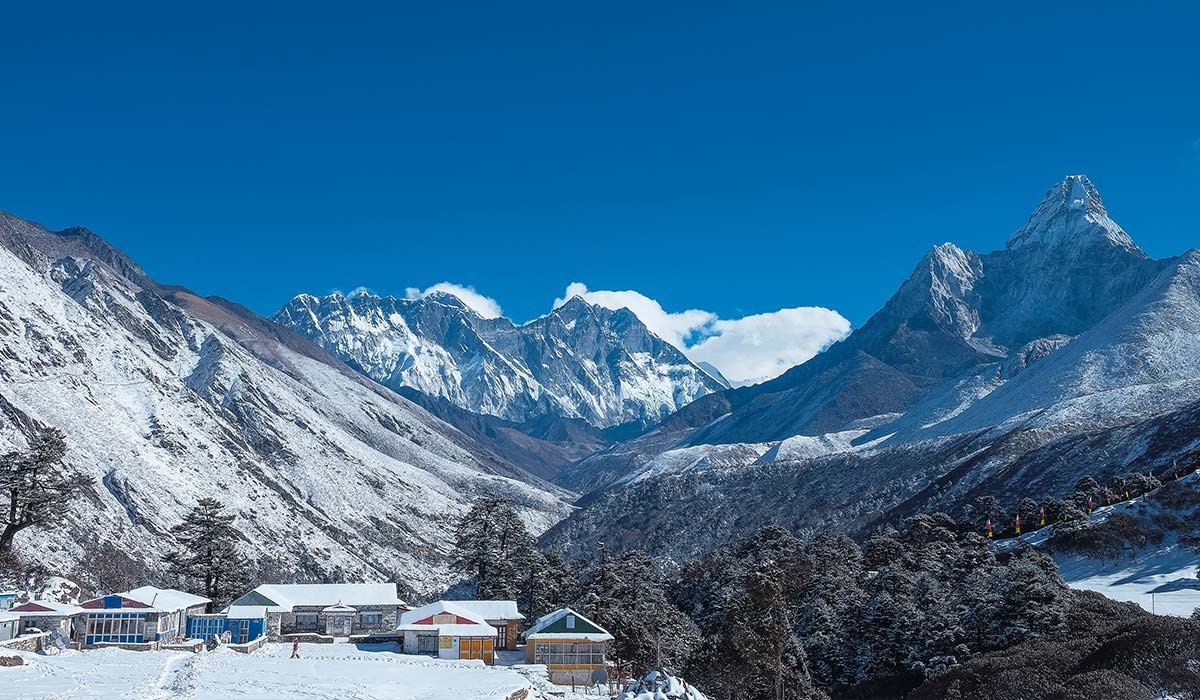
Permits Needed for Everest Base Camp Trek Without Flying to Lukla
Normally, you would have to get two permits to take on the standard trekking route that starts from Lukla. For the 15 Days Everest Base Camp Trek via Road from Salleri as well, these two permits will be sufficient. However, if you are taking part in the trek via road from the Jiri side, you will need to get an additional conservation area permit.
Permits Required for Salleri to Everest Base Camp Trek
- Sagarmatha National Park Permit— US$ 30 per person
- Khumbu Pasang Lhamu Rural Municipality Permit— US$ 30 per person
- Gaurishankar Conservation Area Permit— US$ 30 per person (for Jiri route only)
The national park and rural municipality permits are the standard practice in the mainstream trekking route. Sagarmatha National Park Permit is issued at Kathmandu or can be collected from Monjo at the entrance of the park.
In the case of Khumbu Pasang Lhamu Rural Municipality Permit, it can be obtained only from either Lukla or Monjo. Similarly, the Gaurishankar Conservation Area Permit is issued at both the tourism office in Kathmandu and the conservation areas checkpoint in Shivalaya.
Comparison: Lukla Route vs. Overland Route
| Lukla Route | Overland Route |
Starting Point | Lukla (2,800m/ 9,186ft) | Salleri (2,262/ 7,749ft) |
Trek Duration | 12 to 14 days | 14 to 17 days |
Crowd Levels | Mainstream crowd | Less crowded |
Cultural Experience | Trekking across high-altitude Sherpa settlements | Opportunity to explore more diverse settlements of Rai, Limbu, Brahmin, Chhetri, and Tamang communities |
Scenery and Landscape | High-altitude landscape, alpine forest and dramatic mountain views | Starts from the lower trail across diverse scenery from lush forests, terraced farms, and river valleys to alpine meadows |
Trekking Difficulty | Moderate level | Longer treks and gradual ascends nullify the overall difficulty to some extent |
Risk and Experience | Flying to one of the world’s most dangerous airports adds elements of risk | No risk of flight and an easy way out to avoid re-routing flights during peak seasons |
Acclimatization | Stats off at higher part of trail and acclimatization at Namche Bazaar (3,440m/ 11,286ft) | Namche Bazaar (3,440m/ 11,286ft); gradual pace from lower point (Salleri); more time to acclimatize naturally |
Cost | US$ 1,200 to US$ 1,800 per person | JustUS$ 1,199 per person with Marvel Adventure |
What to Pack for Salleri to EBC Trek?
You have to consider two major points while considering packing for 15 Days Everest Base Camp Trek via Road. The first one is the climate variation in the trekking route and the second one is the season you have chosen for this thrilling Himalayan adventure.
EBC Trek from Salleri (2,262/ 7,749ft) starts near the subtropical region and slowly climbs to the higher region, reaching the maximum point at Kalapatthar (5,644m/ 18,517ft), which is in the tundra/ trans-Himalayan zone.
So, it is important to pack the right layer of clothes suitable for the variation of climatic zones en route. You will be fine with light clothes in the lower region, but make sure to pack buff and insulated clothes for the higher and cold parts of the trail.
Similarly, comfortable trekking boots and other trekking equipment, like a trekking pole, backpack, sleeping bag, daypack, reusable bottle, power bank, sleeping pillow, etc will add comforting factors to your trip.
You also shouldn’t miss the personal hygiene and care items, snacks and a small first-aid kit for this remote high-altitude endeavor. If you are doing this trek during one of the off-season (i.e., winter and monsoon), you need to understand the climatic conditions of each season and pack accordingly to efficiently counter the weather phenomenon.


